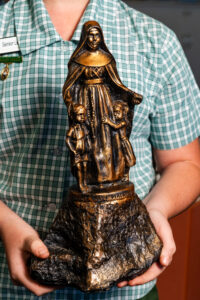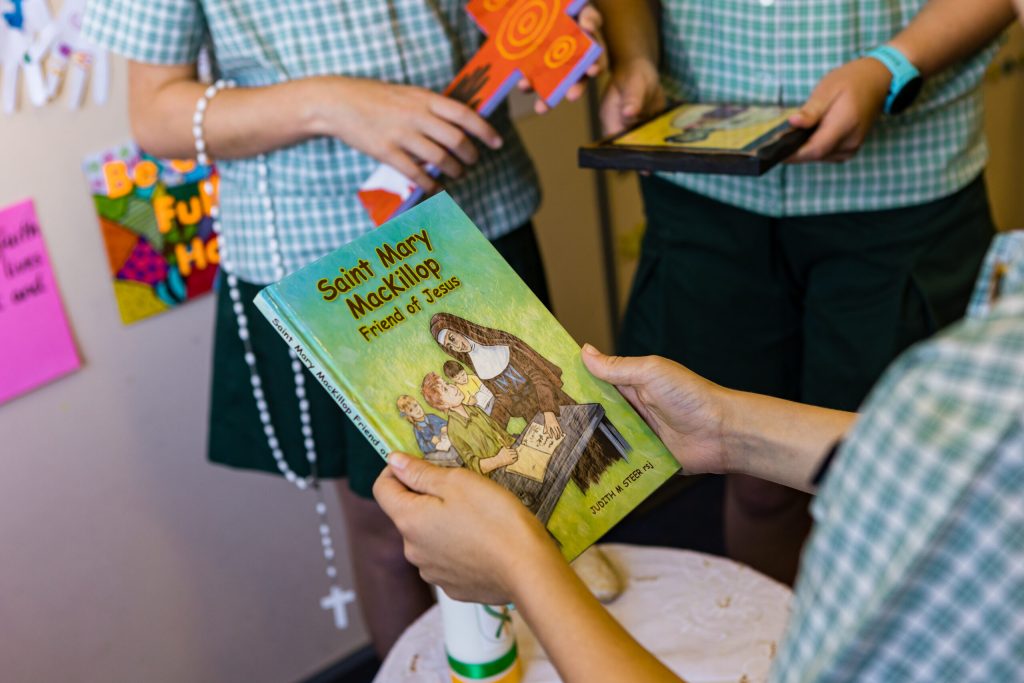
The charism of Saint Mary MacKillop continues to shape and inspire Catholic education across the Diocese of Toowoomba, particularly in its remote and rural schools. The Toowoomba Diocese is 487,000 m2 in size, covering the Darling Downs and South West region of Queensland from just east of the Great Dividing Range to the South Australia border.

As co-founder of the Sisters of Saint Joseph, Mary MacKillop was a trailblazer who believed deeply in the power of education to transform lives — especially in the bush. The Sisters of Saint Joseph had only returned to Brisbane in 1915 following their expulsion by Bishop Quinn in 1880, and very shortly after that they were invited by parish priests to create schools in isolated but growing areas. From the earliest days of the diocese, the Sisters of Saint Joseph were on the frontier — both geographically and spiritually. They travelled vast distances, often on horseback or by train, to establish schools in isolated towns where few others would go.
Both St Stephen’s School, Pittsworth (established initially as St Joseph’s Convent) and St Patrick’s School, Allora were founded in 1916. St Joseph’s Convent in Crows Nest was established by 1920, St Mary’s School, Taroom in 1921 and St Joseph’s School, Chinchilla by 1923. A parish school (St Patrick’s School) followed in St George 10 years later. The Sisters’ presence over the following 50 years is an expression of service in some of the more remote areas of the Darling Downs. St Finbarr’s School, in Quilpie in 1950, St Joseph’s School, Millmerran in 1959, St Maria Goretti School, Inglewood in 1951, and St Joseph’s School, Tara in 1965. That the Sisters also had a presence in Texas, Augathella and Miles is a testament to their fortitude and willingness to go where there was need.

Two further ‘town’ schools were established in the Diocese – St Thomas More’s Primary School, Toowoomba in 1961 and Mary MacKillop Catholic School (later, College) in Highfields in 2003.
The Sisters’ presence brought not only education but also faith, stability and hope to struggling communities. The spirit of the Josephite mission — marked by simplicity, courage, and a deep trust in God — continues to thrive in the educators who now lead these schools.
Such is the witness shown by the Sisters of Saint Joseph in the Toowoomba Diocese that of 32 schools, 10 express the Josephite tradition. A recent initiative, the Josephite Education Network, has recognised this and brought together principals of Josephite-founded schools to strengthen their shared mission. This network fosters collaboration, spiritual formation, and a renewed commitment to Mary MacKillop’s vision.
In places where resources may be limited and distances vast, the commitment to providing quality, faith-based education remains unwavering. Teachers and principals alike continue to ‘never see a need without doing something about it’, echoing Mary MacKillop’s timeless call to action. It is a powerful reminder that the Josephite story is not just history — it is a living tradition.
Chris Gabbett
President of AJASS (Association of Josephite Affiliated Secondary Schools)
Principal, Mary MacKillop Catholic College, Highfields (Queensland)

